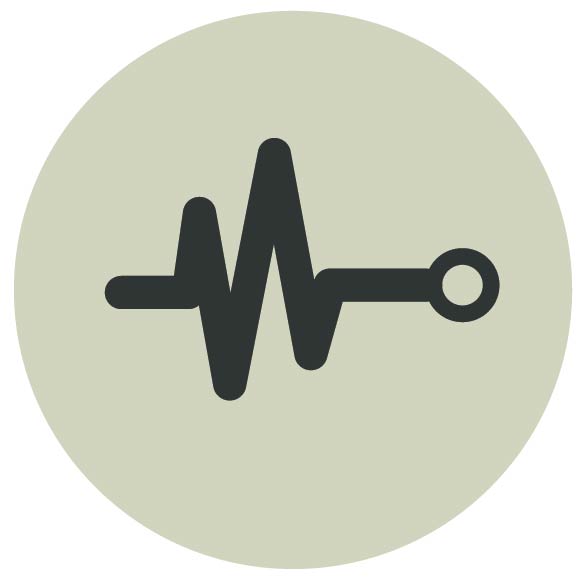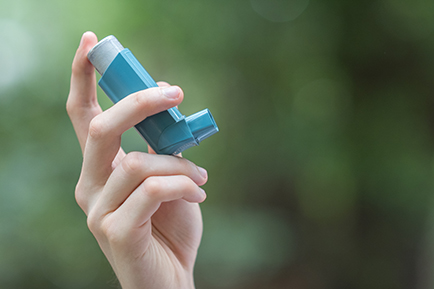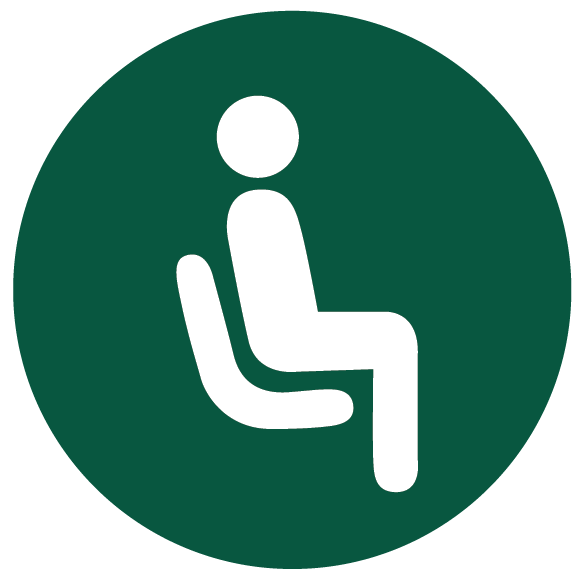Asthma is a common, long-term condition that affects the airways in the lungs – the tubes that carry air in and out of your lungs. It usually causes symptoms such as coughing, wheezing, shortness of breath and chest tightness. Asthma often starts in childhood, but adults can develop asthma too.
The content on this page is provided solely for information purposes and provides an overview of the subject matter covered. It is not a substitute for professional medical advice, diagnosis or treatment. If you think you have asthma, please seek further information. The information on this page is subject to change without notice.
Asthma is an invisible disability
 Many types of asthma ranging in severity from mild to severe
Many types of asthma ranging in severity from mild to severe Common triggers include: pollen, exercise, cigarette smoke, pollution, animals and pets and colds and flu
Common triggers include: pollen, exercise, cigarette smoke, pollution, animals and pets and colds and flu 1 in every 12 adults in the UK has asthma and one in every 11 children (2)
1 in every 12 adults in the UK has asthma and one in every 11 children (2) Estimated 262 million people affected by asthma globally in 2019 (1)
Estimated 262 million people affected by asthma globally in 2019 (1) Most common chronic disease among children (3)
Most common chronic disease among children (3) 3 people die every day in UK because of an asthma attack
3 people die every day in UK because of an asthma attack Asthma stats & facts poster Download here
Asthma stats & facts poster Download here
There are many types of asthma and everyone experiences asthma differently. This makes it difficult to know which type of asthma someone has but most are managed in the same way. While asthma is a long-term condition, most people can be symptom-free with a good treatment and self-management plan.
Asthma symptoms:
The airways in someone with asthma are inflamed and ready to react when they come into contact with one of their asthma triggers:
- The muscles around the walls of the airways tighten so that the airways become narrower
- The lining of the airways becomes inflamed and starts to swell
- Sticky mucus or phlegm sometimes builds up, which can narrow the airways
These reactions make it difficult to breathe and can bring on chest tightness, shortness of breath, wheezing, or coughing. It can also lead to an asthma attack.
Someone with asthma may have:
- A preventer inhaler to use every day
- A reliever inhaler to use when they have asthma symptoms as prescribed to lower their risk of asthma symptoms and attacks
- A written asthma action plan that includes information about how their asthma affects them and how to manage it
- Regular asthma reviews with their doctor or asthma nurse


Types of asthma:
Allergic asthma
This type of asthma is triggered by allergens like pollen, pets and dust mites so it is important for people with this type of asthma to avoid their asthma triggers as much as possible. They also tend to have a preventer inhaler which they take every day and a reliever inhaler that they use when they have asthma symptoms. About 80% of people with allergic asthma have a related condition like hay fever, eczema or food allergies.
‘Seasonal’ asthma
Some people have asthma that only flares up at certain times of the year, such as during hay fever season, or when it’s cold.
Occupational asthma
Occupational asthma is asthma that is caused directly by the work someone does and is usually a type of allergic asthma. For example, someone may be allergic to flour dust in a bakery, or dust from latex gloves could trigger symptoms for someone who works in healthcare.
Non-allergic asthma
Non-allergic asthma is a type of asthma that isn’t related to an allergy trigger like pollen or dust, and is less common than allergic asthma. The causes are not well understood, but it often develops later in life, and can be more severe.
‘Exercise induced’ asthma
Some people get asthma-like symptoms triggered only by exercise.
This is often called ‘exercise-induced asthma’, but a better term is ‘exercise induced bronchoconstriction’ (EIB). This is because the tightening and narrowing of the airways (bronchoconstriction) is not caused by having asthma. It mostly affects elite athletes or people doing strenuous exercise in very cold conditions.
Difficult asthma
Some people with asthma have what’s known as difficult asthma. Their asthma may be difficult to manage because of other health issues they may have, including allergies, or because they have trouble remembering to take their preventer medicine.
Severe asthma
About 4% of people with asthma have what’s known as severe asthma which is diagnosed at a specialist asthma clinic. They may need different asthma medicines, for example long-term steroid tablets to reduce inflammation in your airways or a new class of medicines called biologics to better control your asthma symptoms and reduce asthma attacks.
Adult onset asthma
Asthma often starts in childhood, but some people are diagnosed with asthma for the first time when they’re an adult. This is known as adult onset, or late onset, asthma.
Childhood asthma
Asthma affects around 1.1 million children in the UK. Some children diagnosed with asthma find it improves or disappears completely as they get older. However it can return later in life.
Effects on and challenges faced in daily life
Asthma triggers include:
- Allergens, cigarette smoke, pollution, exercise, or respiratory infections
- Common indoor triggers, such as dust mites, animals and pets, chemical irritants (like cleaning agents, paint, and air fresheners), mould and damp
- Female hormones, stress and anxiety, emotions, and sex
- Some alcoholic drinks, food, recreational drugs
- Weather
Asthma UK has more information about asthma triggers and how to deal with them.
Assistance and support you can offer
- Be aware of the most common asthma triggers
- Some people share their action plans with friends and family so people know how to help them
- Know what inhalers look like so you can help someone find it if they need your help: inhalers can come in many different sizes and shapes. Inhalers to relieve asthma attacks are usually blue. Inhalers that prevent asthma attacks may be brown or white. Some people also use a spacer - this is a hollow plastic cylinder that attaches to an inhaler and it can help a person take their medication more effectively
- Know who your first aider is and contact them if someone is having an asthma attack. There may be a need to seek urgent medical help (eg call emergency services) rather than just contacting the first aider
Sources:
Asthma UK: https://www.asthma.org.uk/
British Lung Foundation: https://www.blf.org.uk/
WHO: www.who.int
Look out for these Sunflower icons
 I may need more time
I may need more time I may need a place to sit down and rest
I may need a place to sit down and rest I am sensitive to smell
I am sensitive to smell I have a food allergy
I have a food allergy I have a hidden disability
I have a hidden disability
The content on this page is provided solely for information purposes and provides an overview of the subject matter covered. It is not a substitute for professional medical advice, diagnosis or treatment. If you think you have asthma, please seek further information. The information on this page is subject to change without notice.


